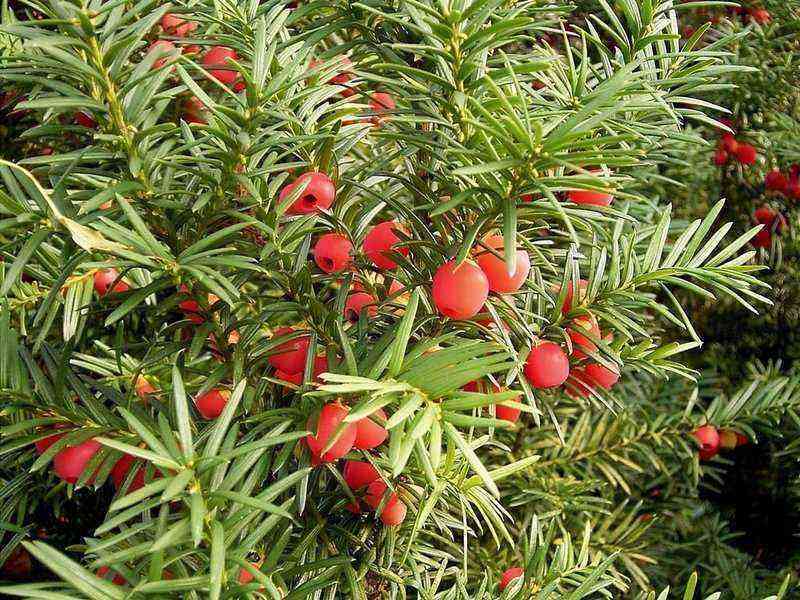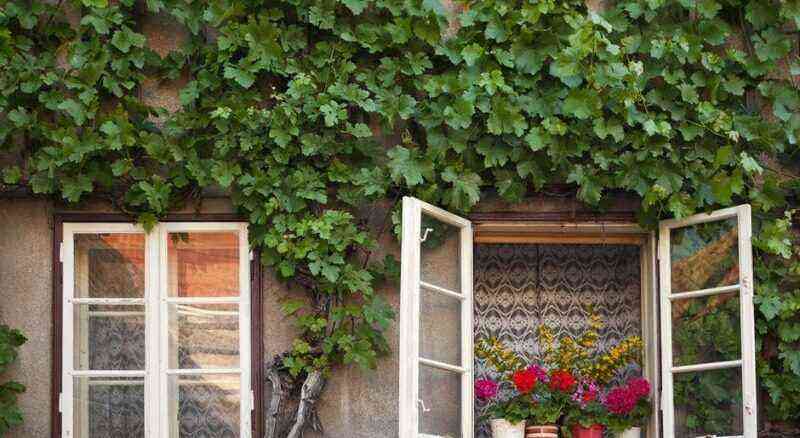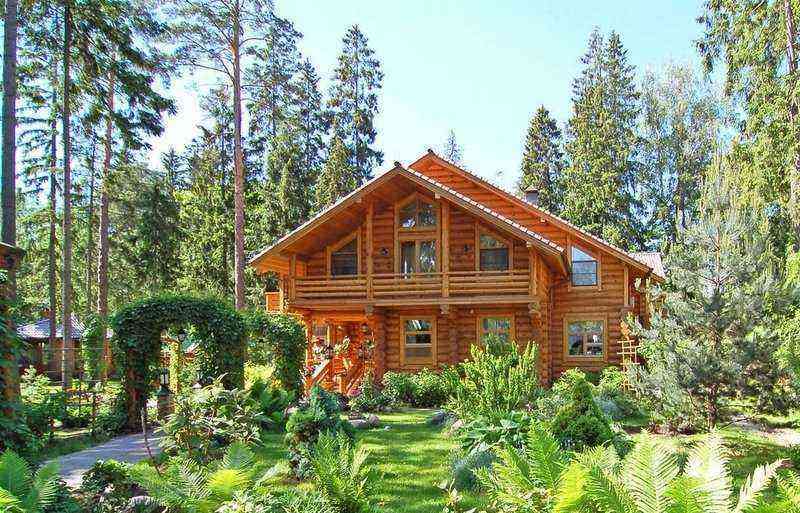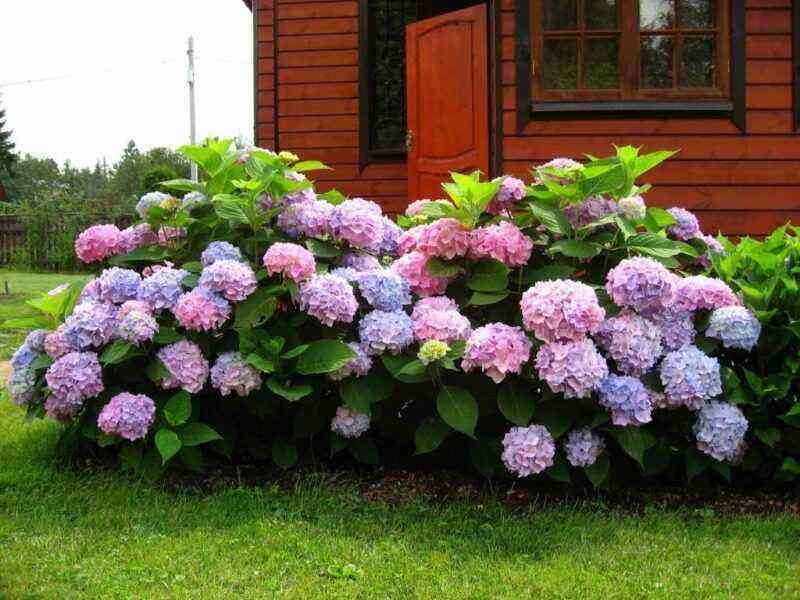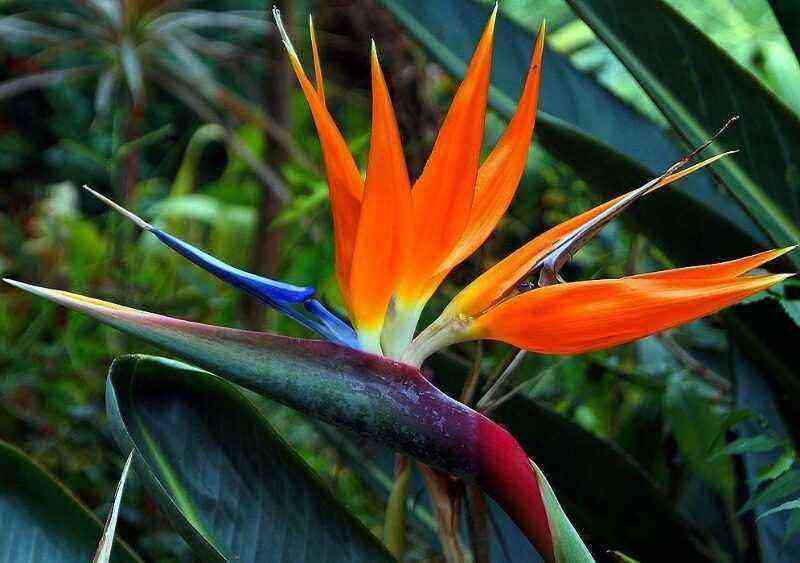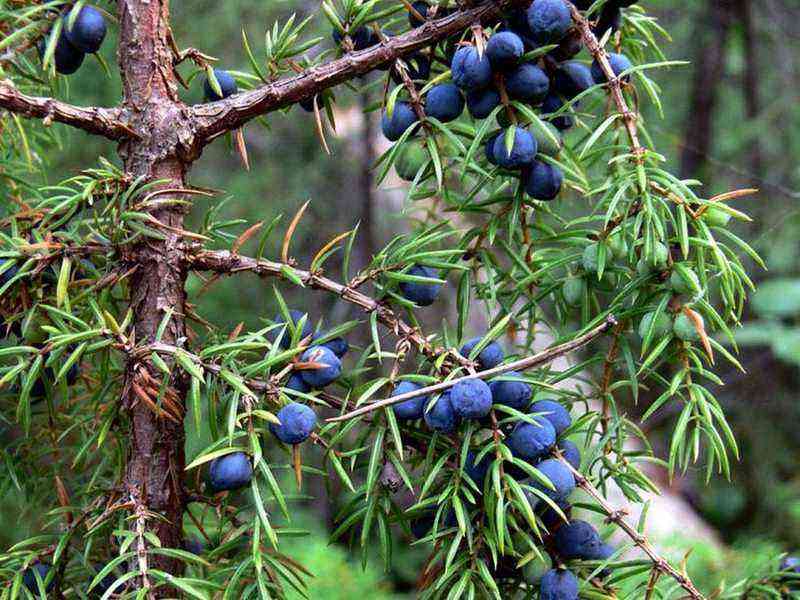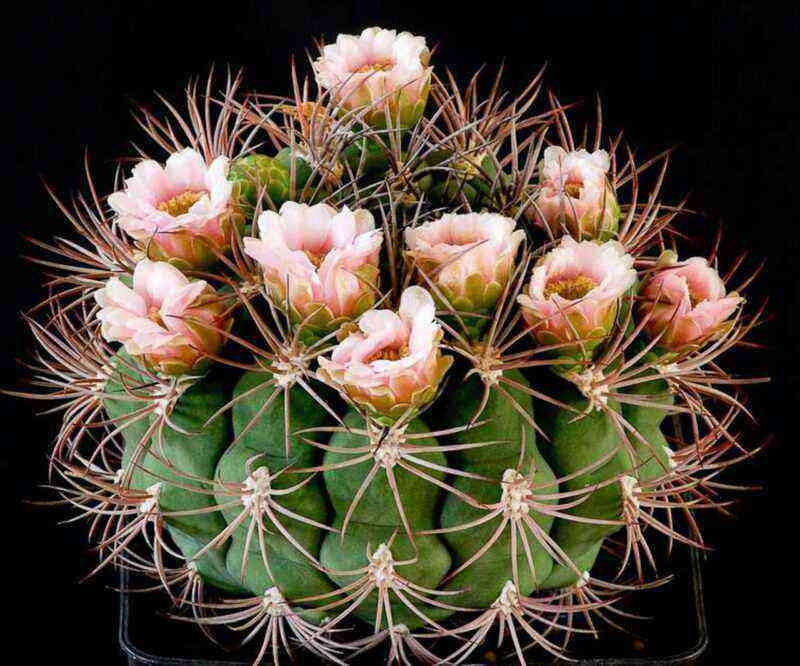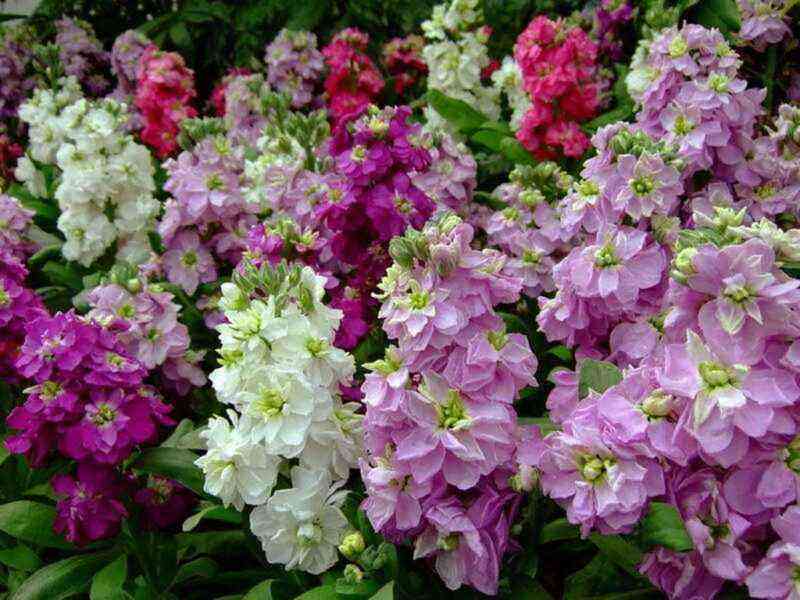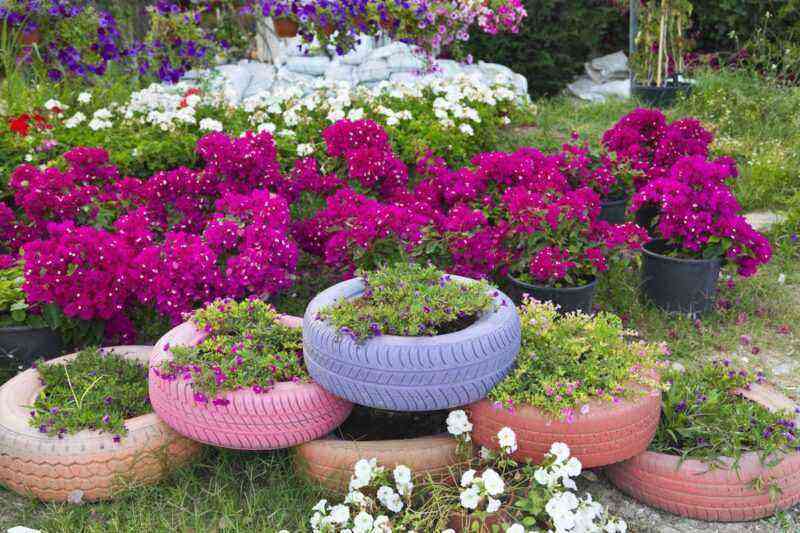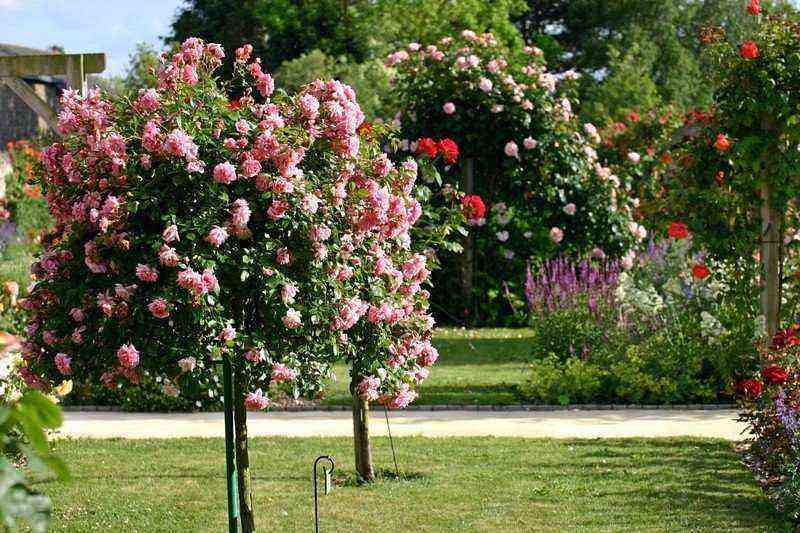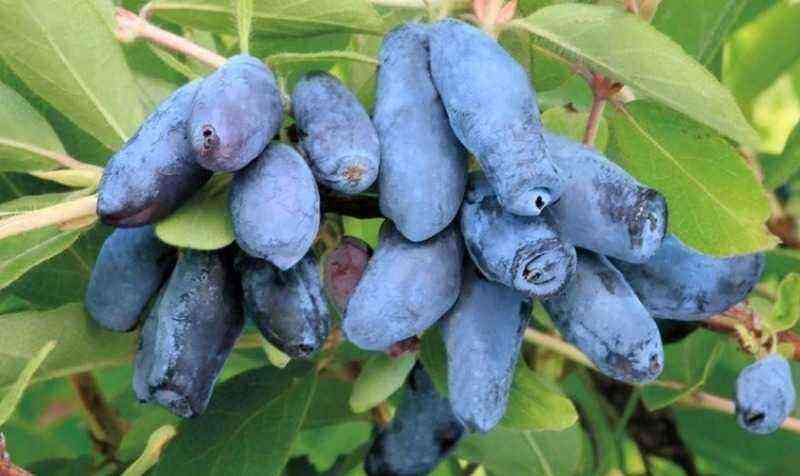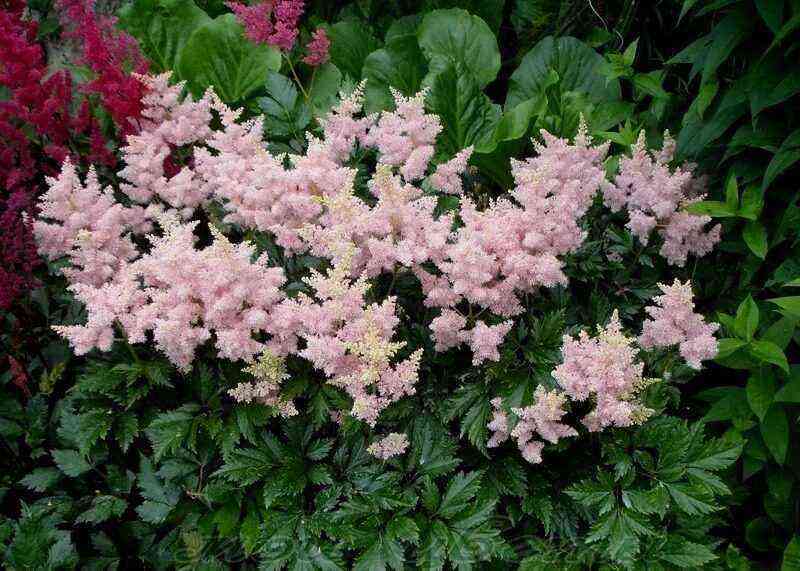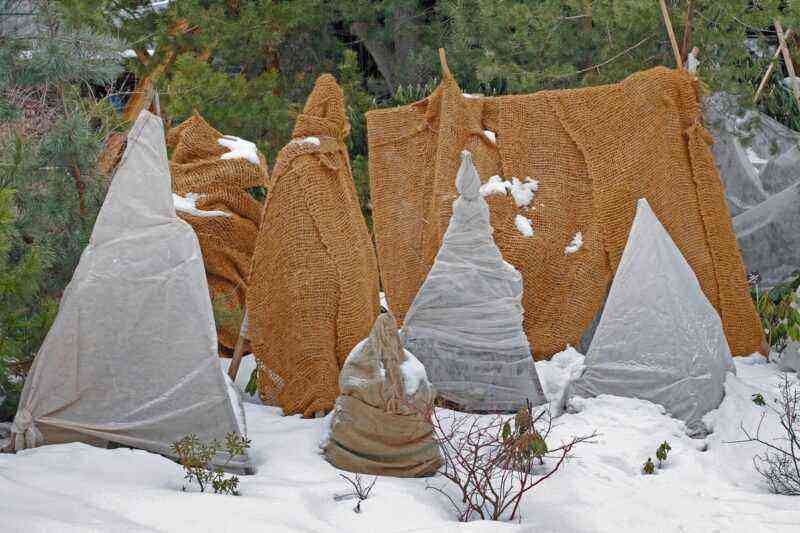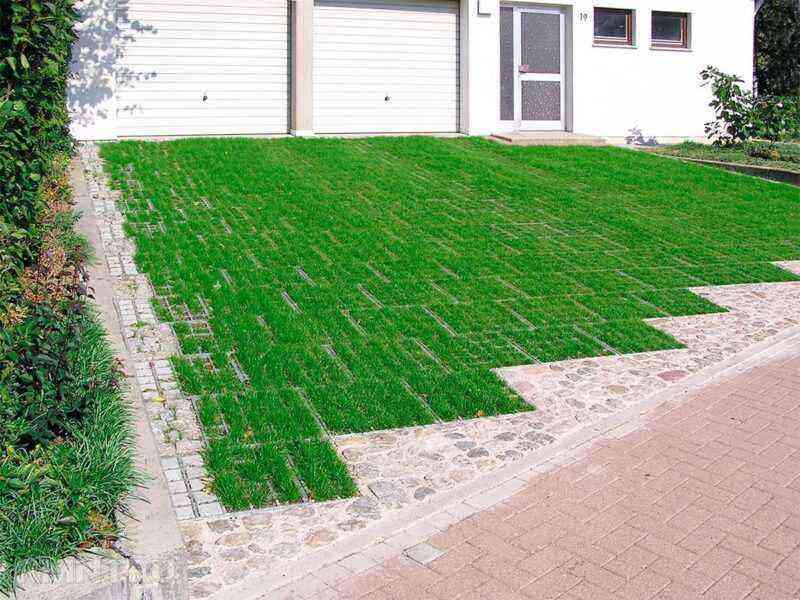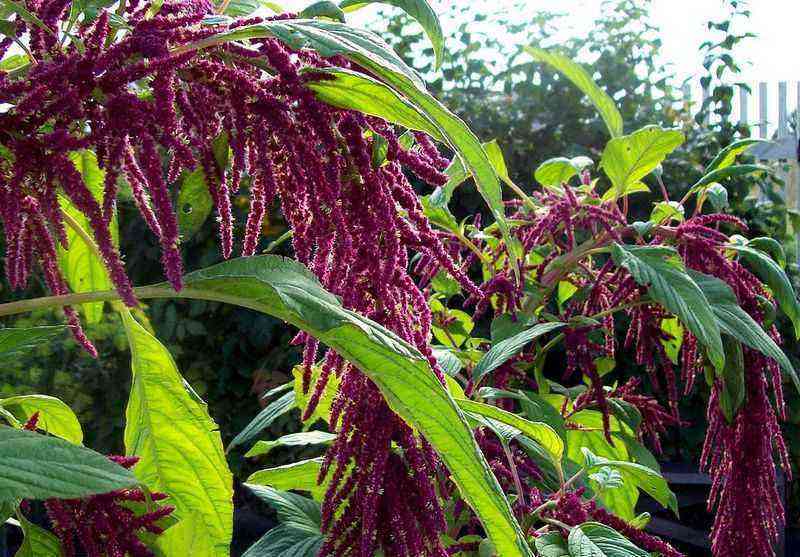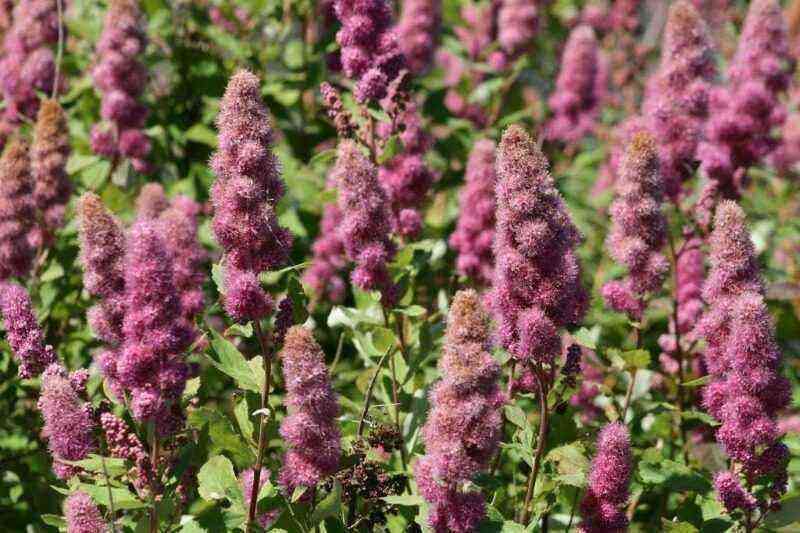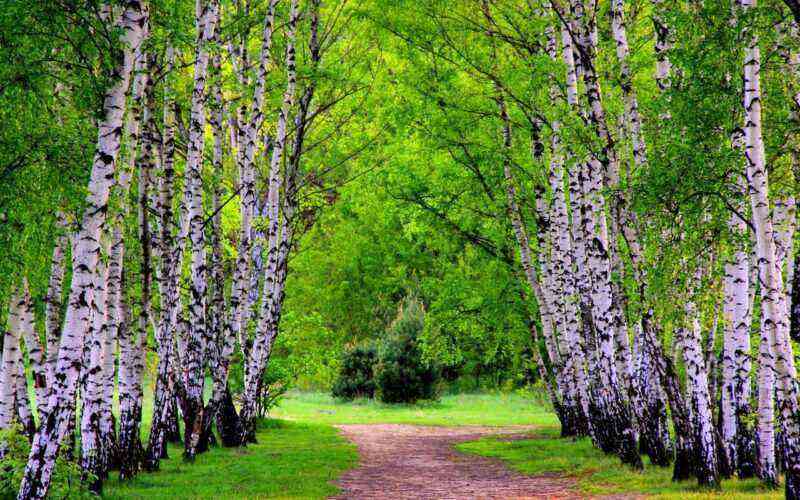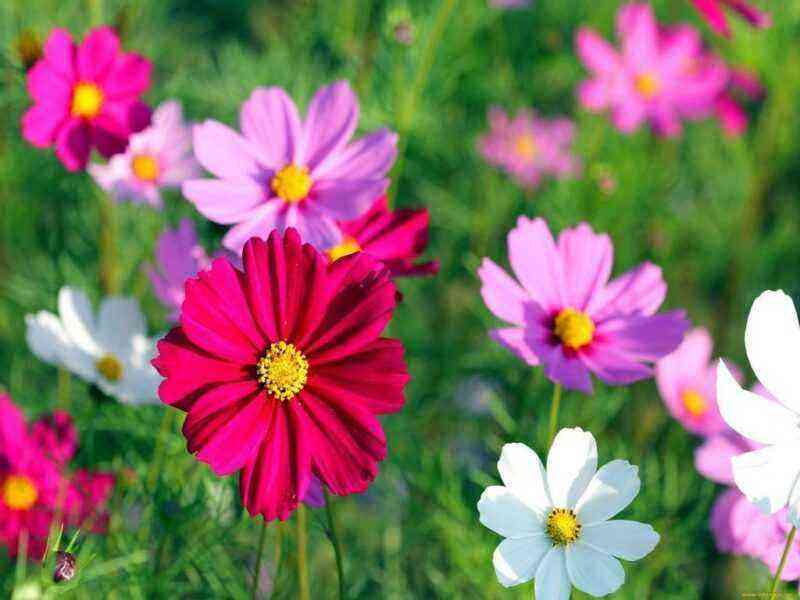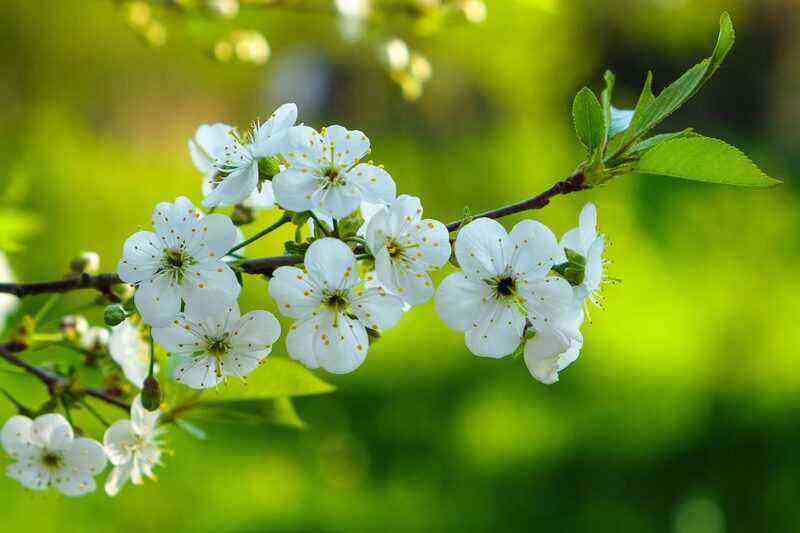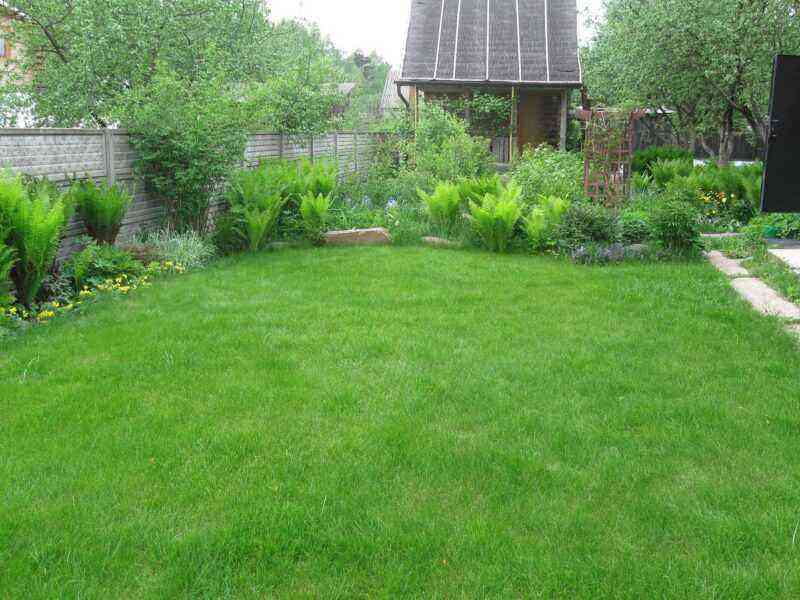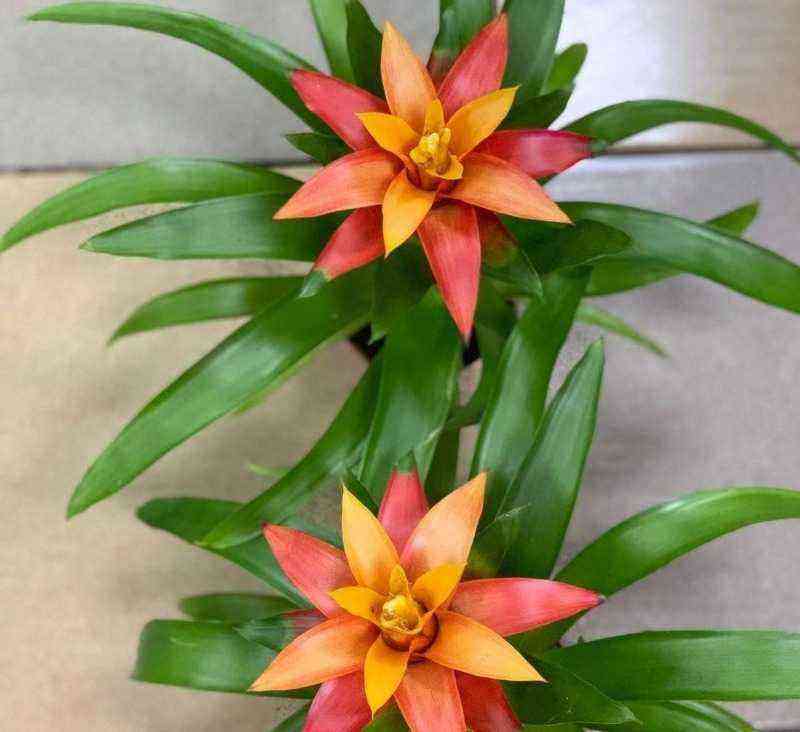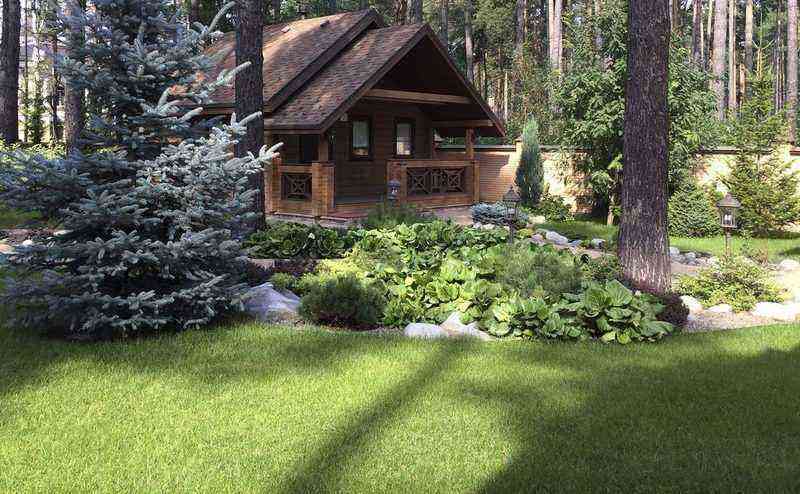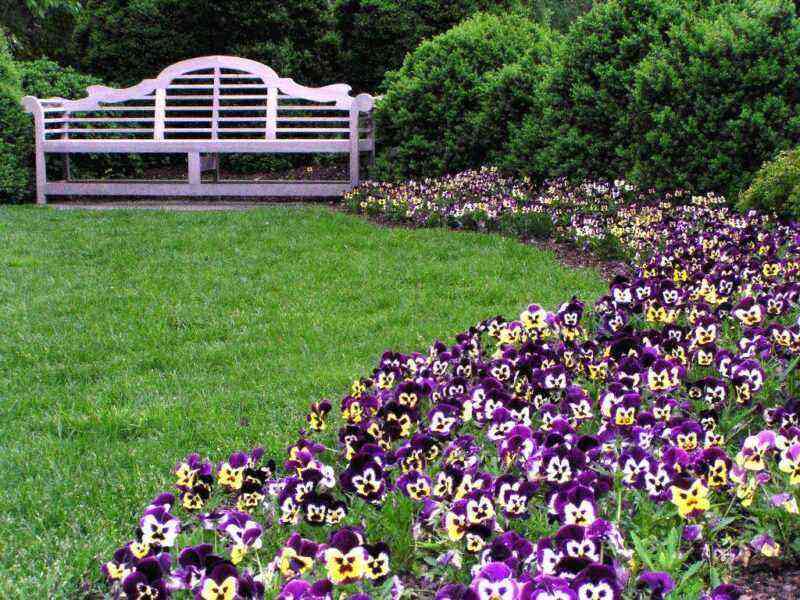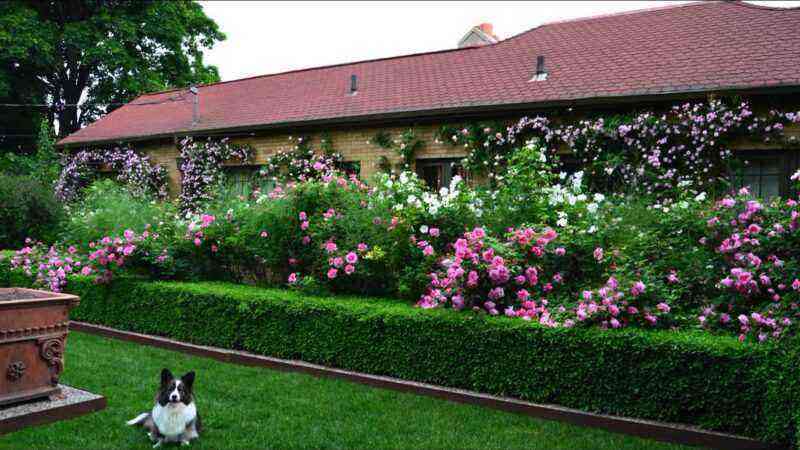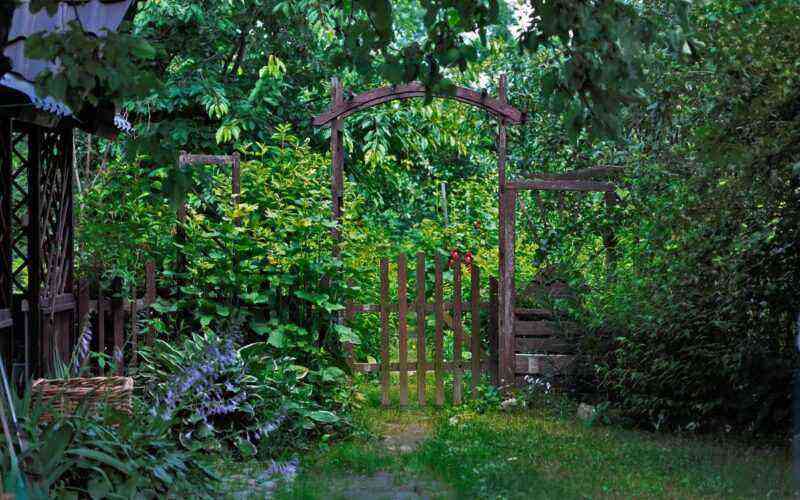Walking along a shady alley in the park, you probably saw tall plants with small inflorescences forming many lush, spreading branches. This astilba is a beautiful plant that is appreciated by landscape designers for its unpretentiousness and luxurious appearance.
Where the plant looks best
In the wild, astilbe can be found in dense deciduous forests and along the banks of water bodies. It perfectly tolerates moderately moist soil and shaded areas, which allows this plant to be planted near an artificial lake and in gardens with tall trees and shrubs.
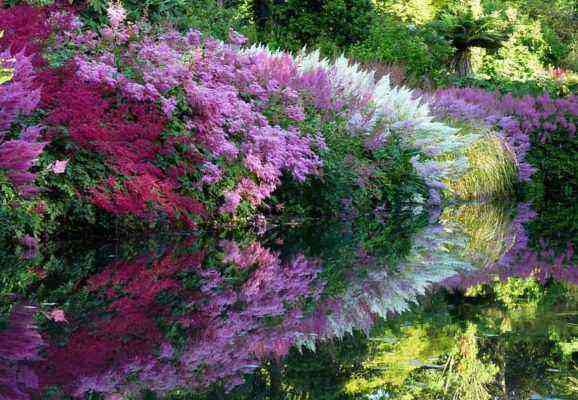
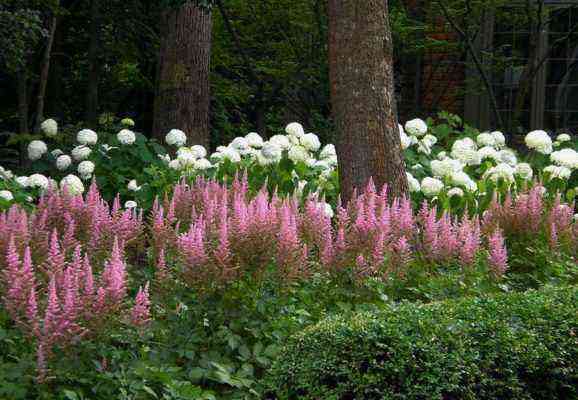
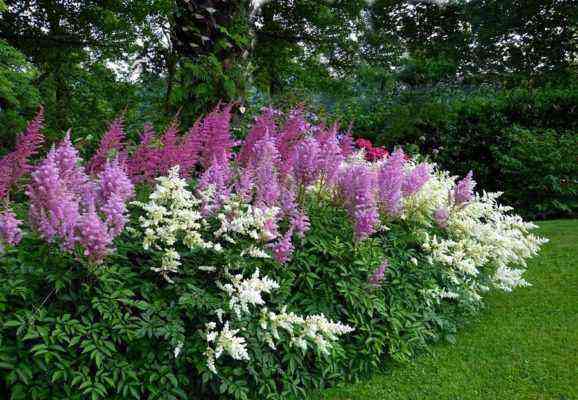
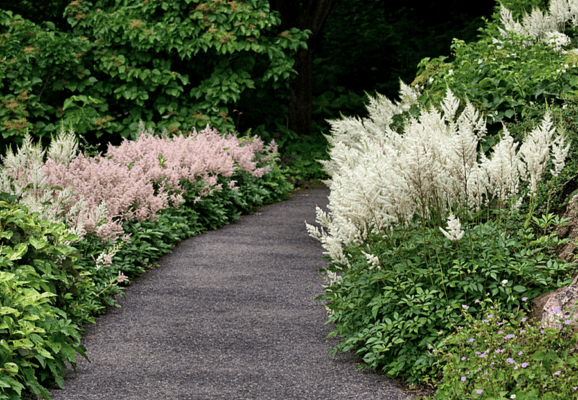
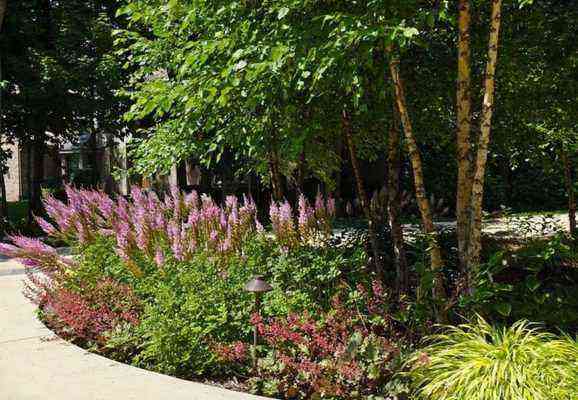
This amazing plant, in addition to luxurious forms, also has several colors, which allows you to decorate almost any flower bed or lawn in various styles and directions. The range of astilbe shades is small:
- white,
- soft peach,
- pink
- lilac,
- rich scarlet.
But this does not bother landscape designers who invariably use the plant in their projects.

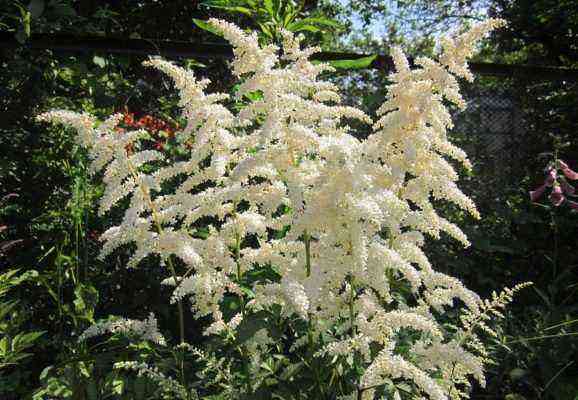

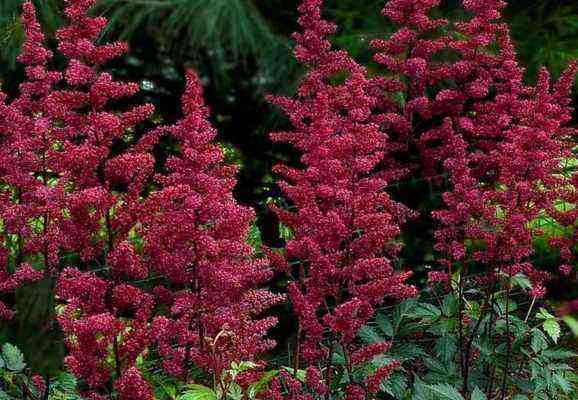
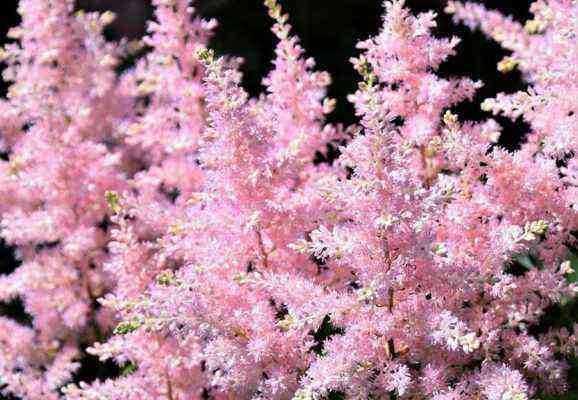
Here are some planting options with this flower, as well as combinations of astilba with other plants.
Astilba on roadside flower beds and borders
The tall fluffy astilbe, planted along the garden paths, looks spectacular and original both in the company with other flowers and shrubs, and among the plantations, consisting exclusively of its different subspecies and varieties.
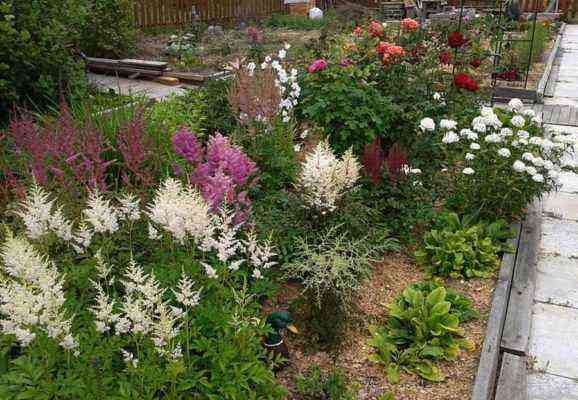
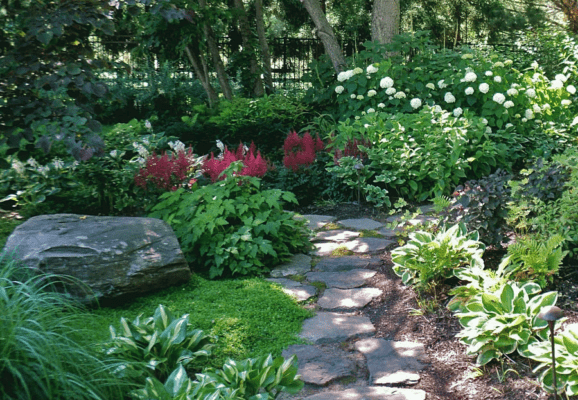
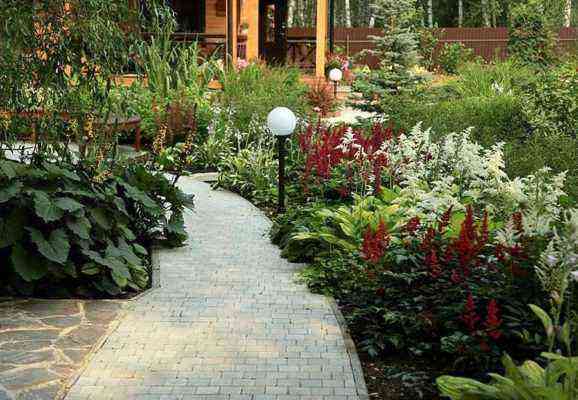
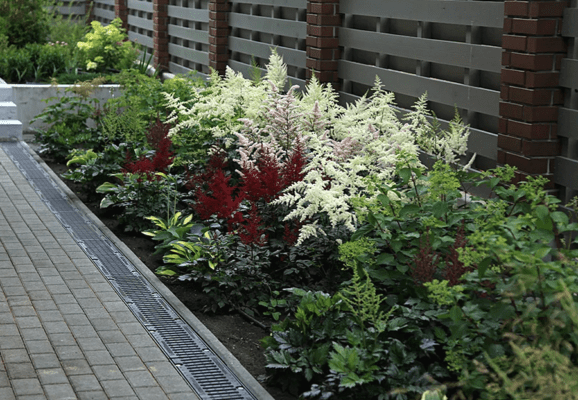
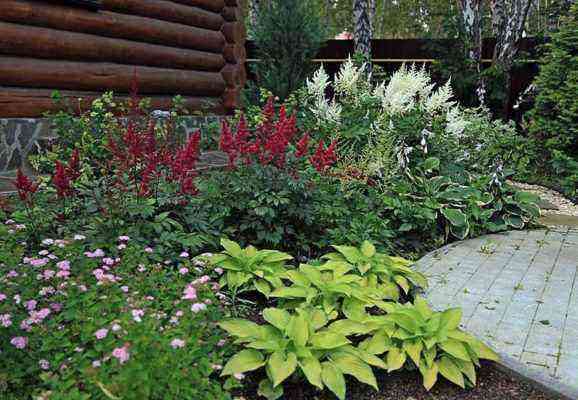
Astilba in mixborders
The spreading panicles of astilba effectively complement flower and shrub crops in mixed compositions.

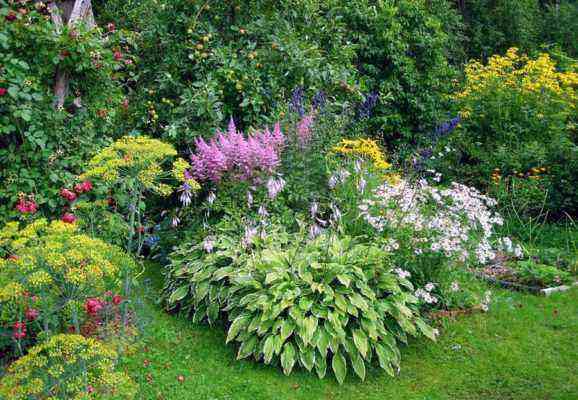
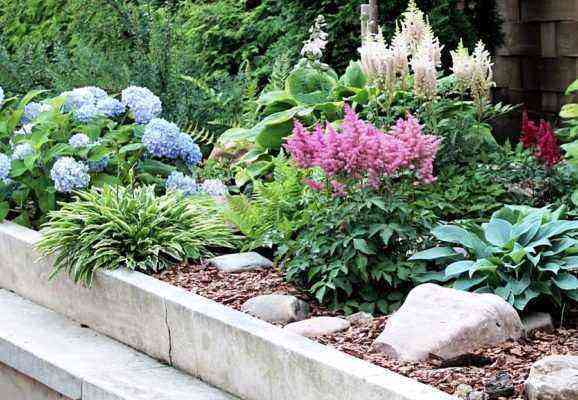

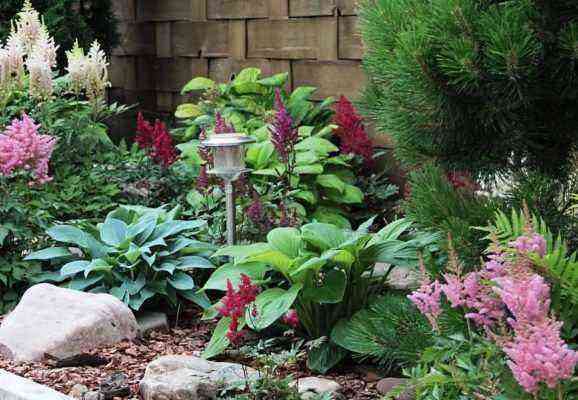
A few more examples of the use of astilba of different varieties and hybrids in landscape design.
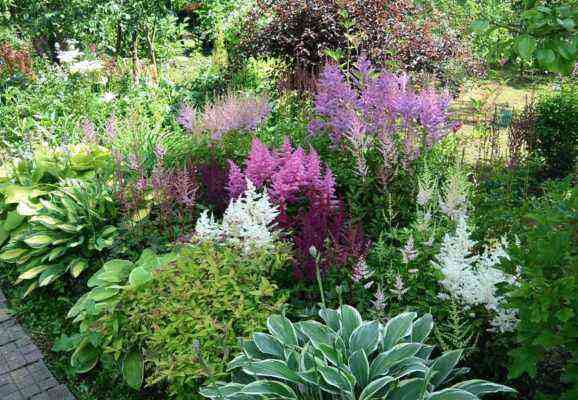

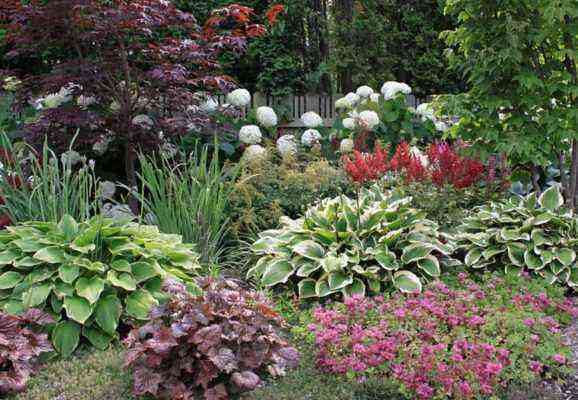
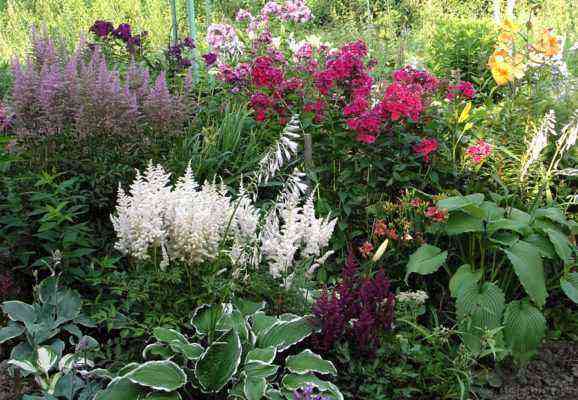

As mentioned earlier, astilba loves moist soil and therefore can be planted near small bodies of water.

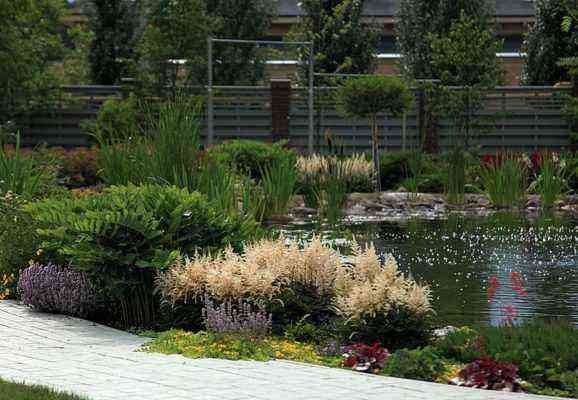
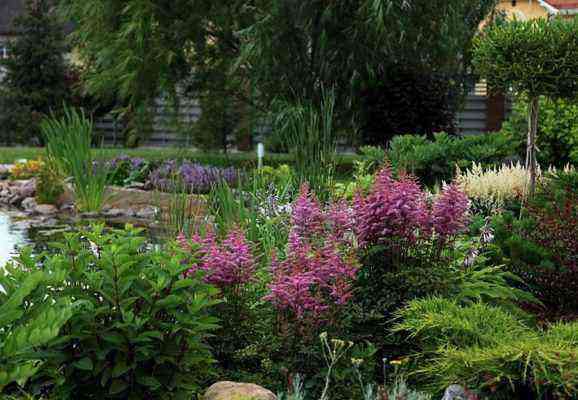
When decorating a landscape, it is necessary to take into account the compatibility of plants. Astilbe is especially expressive in tandem with hosta, barberry, spirea, fern and juniper.
Astilba bushes near trees
Astilbe looks advantageous in the shade of the crown of large deciduous and coniferous trees, against the background of large and medium-sized shrubs.

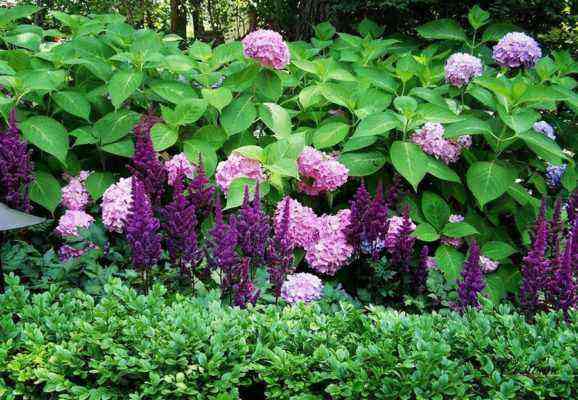


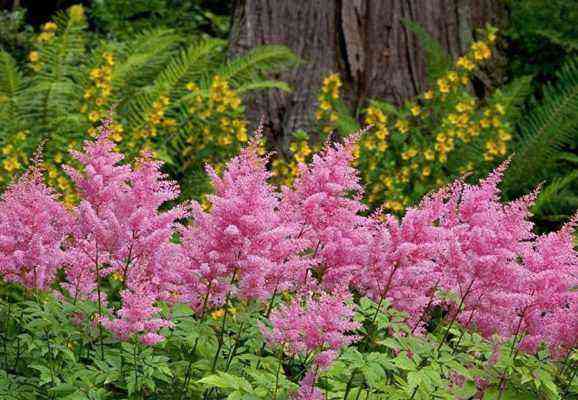
Astilbes and hosts
Tall slender astilbe is well combined with hosts with wide bright leaves. These plants complement each other very beneficially.

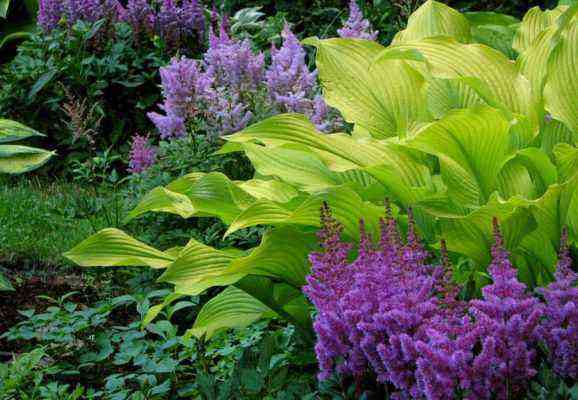
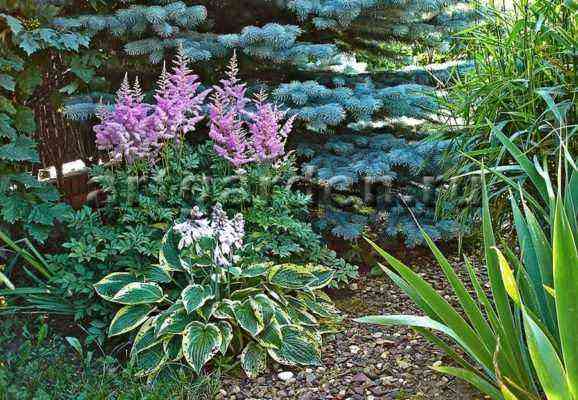
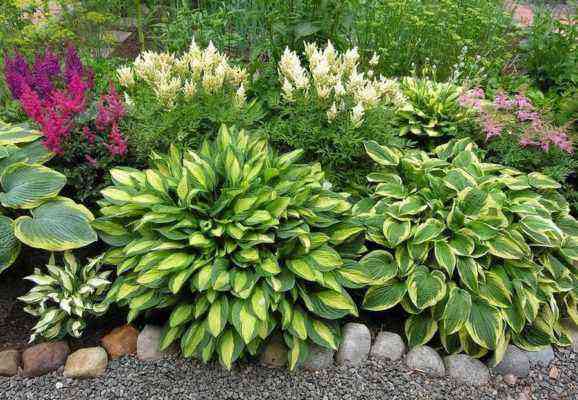
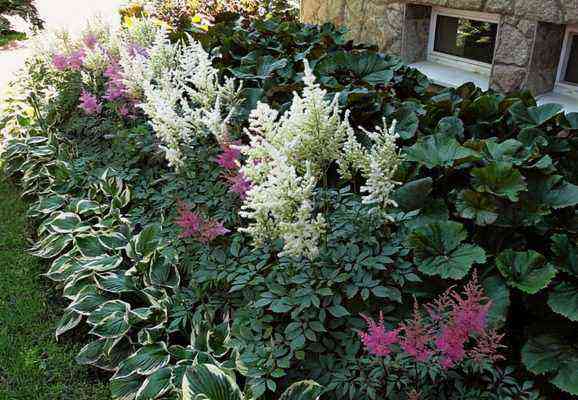
Tandem with juniper
Against the background of coniferous juniper, astilba looks especially exquisite, drawing the eye and being a bright accent in the composition.


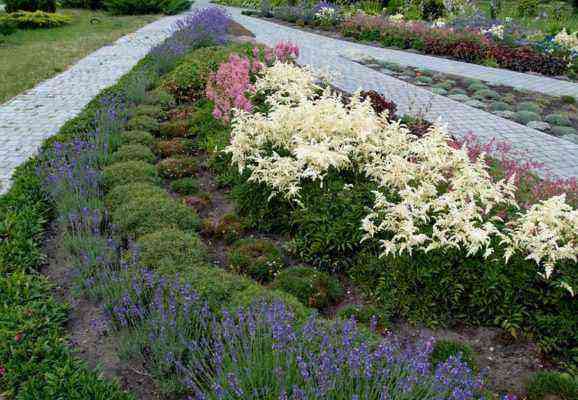
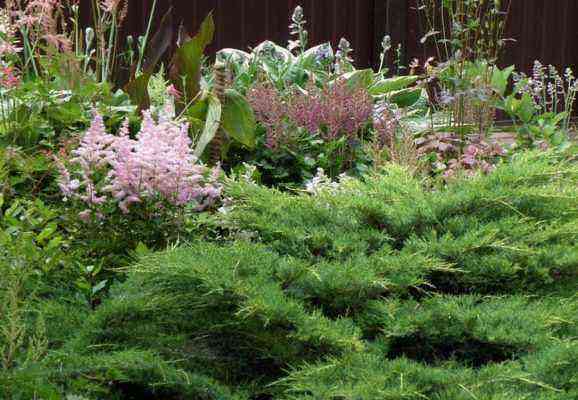
Examples of the design of naturgardens and park areas.
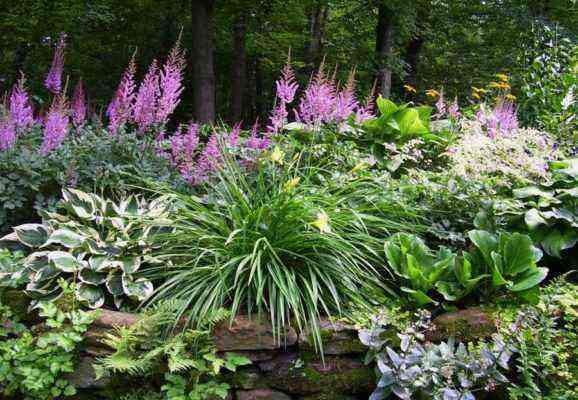
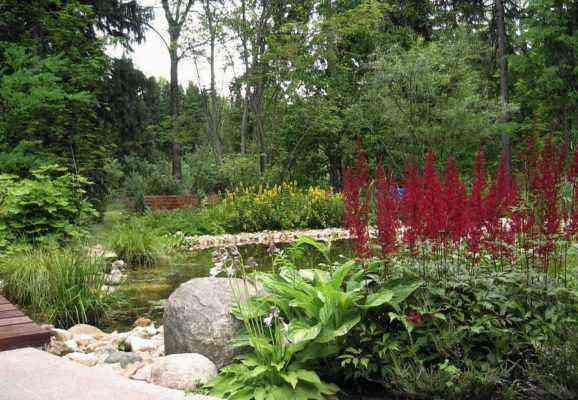

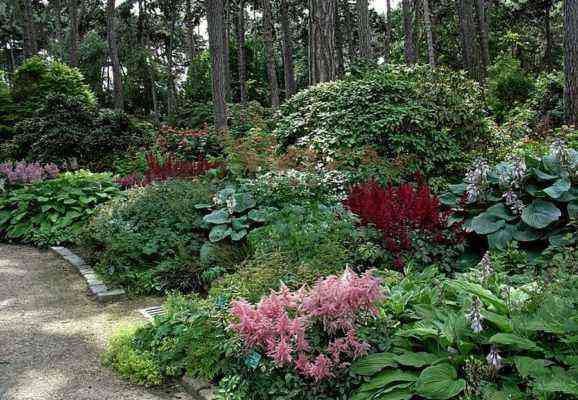
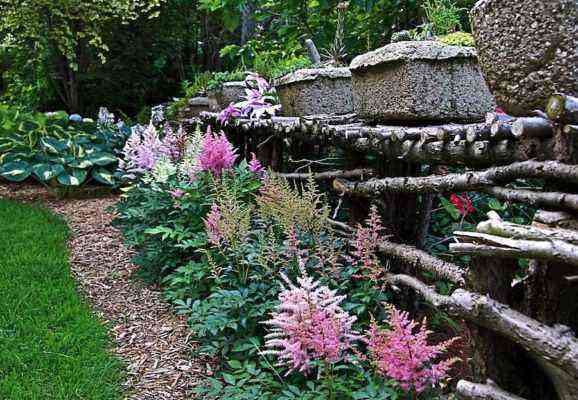
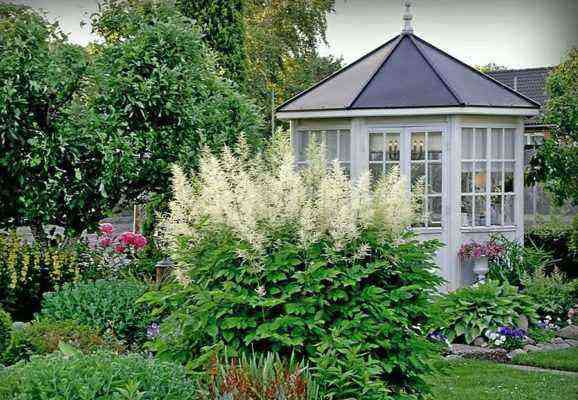
Astilba is one of those flowering perennials that requires little maintenance and, most importantly, can survive cold winters outdoors. No wonder this beautiful plant is deservedly popular with gardeners and landscape designers.

